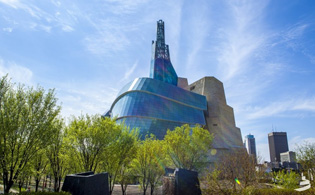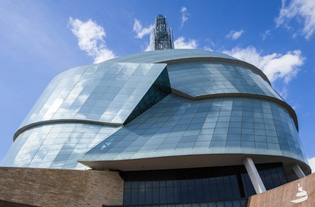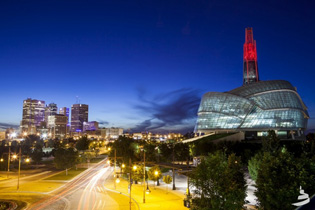CUTTING-EDGE DESIGN
26 Nov 2014
The recently opened Canadian Museum for Human Rights has been created with environmental sustainability in mind and features a mix of cutting-edge design and construction.

The newly-opened Canadian Museum for Human Rights (CMHR) is a mix of cutting-edge design, construction, accessibility and sustainability, and seeks to reflect the concepts of freedom, equality and respect.




The building comprises a ‘mountain’ of 400,000 year-old limestone encased in a ‘glass cloud,’ symbolising light and hope. The impressive façade is made up of 1,300 pieces of glass, of which no two are the same. The museum is crowned by a 23-storey glass spire, or ‘Tower of Hope,’ that rises 100m into the sky. At the top is an observation deck from which visitors can look out to the horizon, and at night the tower is illuminated as a symbol of enlightenment.
Once inside, visitors are led through different gallery spaces along an 800m continuously rising spiral path. This constant upwards trajectory is designed to symbolise the upward struggle towards fully realised human rights around the world.
The museum also sets new Canadian and world standards for accessibility. The museum provides nearby parking for those with disabilities, welcomes service animals such as guide dogs, and provides free entry for support individuals. It is also entirely accessible by ramps and elevators. In addition, exhibition content and audio tours can be accessed via tactile access points and keypads that are flagged up by floor strips, whilst all videos are interpreted into both American Sign Language and Quebec Sign Language. Braille is used throughout the building, print size and contrast meets required standards, and descriptive audio tours are also available.
The building has also been built with environmental sustainability in mind and is designed to achieve an LEED rating Silver (pending certification). Green features include insulated glazing, rainwater collection use in the building’s cooling and toilet-flushing systems, low-flow fixtures and waterless urinals. Showers are provided for cyclists, and bus passes are subsidised for staff to encourage green commuting.
The Canadian Museum for Human Rights opened in September 2014.







